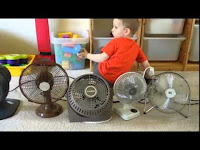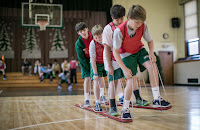The years from 12 to 18 are the most difficult time for teenagers with Autism Spectrum Disorder - Level 1 (ASD). These young people typically become more socially isolated during a period when they crave friendships and inclusion more than ever. In the cruel world of middle and high school, they often face rejection, isolation and bullying.
Meanwhile, school becomes more demanding in a period when they have to compete for college placements. In addition, issues of sexuality and a desire for independence from parents create even more problems.
Meanwhile, school becomes more demanding in a period when they have to compete for college placements. In addition, issues of sexuality and a desire for independence from parents create even more problems.
In the teenage world where everyone feels insecure, adolescents that appear different are voted off the island. ASD teenagers often have odd mannerisms. For example, one adolescent talks in a loud un-modulated voice, avoids eye contact, interrupts others, violates their physical space, and steers the conversation to his favorite odd topic. Another appears willful, selfish and aloof, mostly because he is unable to share his thoughts and feelings with others.
Isolated and alone, many ASD teenagers are too anxious to initiate social contact. Many are stiff and rule-oriented, which is a deadly trait in any teenage popularity contest. Friendship and all its nuances of reciprocity can be exhausting, even though the teen wants it more than anything else.
These adolescents are not privy to street knowledge of sex and dating behaviors that other adolescents pick up naturally. This leaves them clueless about sex. Boys can become obsessed with Internet pornography and masturbation. They can be overly forward with a girl who is merely being kind, and then later face charges of stalking her. The ASD S female may have a fully developed body, but no understanding of flirtation and non-verbal sexual cues, making her susceptible to harassment and even date rape.
==> Parenting System that Significantly Reduces Defiant Behavior in Teens with Aspergers and High-Functioning Autism
==> Parenting System that Significantly Reduces Defiant Behavior in Teens with Aspergers and High-Functioning Autism
Many autistic teenagers, with their average to above average IQs, can sail through grammar school, but hit academic problems in middle and high school. They now have to deal with four to six teachers, instead of just one. The likelihood that at least one teacher will be indifferent - or even hostile - toward making special accommodations is certain. The “special needs” student now has to face a series of classroom environments with different classmates, odors, distractions, noise levels, and sets of expectations.
These teens, with their distractibility and difficulty organizing materials, face similar academic problems as students with Attention Deficit Disorder. For example, a high school term paper or a science fair project becomes impossible to manage because no one has taught the “special needs” teen how to break it up into a series of small steps. Even though the academic stress on the adolescent can be overwhelming, school administrators may be reluctant to enroll him in special education at this late point in his educational career.
Teenagers on the spectrum typically do not care about adolescent fads and clothing styles (concerns that obsess everyone else in their peer group). They may neglect their hygiene and wear the same haircut for years. Boys forget to shave. Girls don't comb their hair or follow fashion. Some remain stuck in a grammar school clothes and hobbies (e.g., unicorns and Legos) instead of moving into adolescent concerns like Facebook and dating. Boys on the autism spectrum often have no motor coordination. This leaves them out of high school sports, typically an essential area of male bonding and friendship.
The teenage years are more emotional for everyone. Yet the hormonal changes of adolescence, coupled with the problems associated with autism, can mean that the adolescent becomes emotionally overwhelmed. Childish tantrums reappear. Boys may act up by physically attacking a teacher or peer. They may experience “meltdowns” at home after another day filled with harassment, bullying, pressure to conform, and rejection. Suicide and drug addiction become real concerns, as the adolescent now has access to a car, drugs and alcohol. The teenage years can overwhelm not only the “special needs” adolescent, but also his or her parents.
Pain, loneliness and despair can lead to problems with drugs, sex and alcohol. In their overwhelming need to fit in and make friends, some ASD teenagers fall into the wrong high school crowds. Adolescents who abuse substances will use the autistic teen’s naivety to get him to buy or carry drugs and liquor for their group. If cornered by a police officer, the autistic teen usually does not have the skills to answer the officer’s questions appropriately. For example, if the officer says, “Do you know how fast you were driving?” the teen may reply bluntly, “Yes,” and thus appears to be a smart-aleck.
==> Parenting System that Significantly Reduces Defiant Behavior in Teens with Aspergers and High-Functioning Autism
==> Parenting System that Significantly Reduces Defiant Behavior in Teens with Aspergers and High-Functioning Autism
Here are a few things that parents can do to help their teen through the tough teenage years:
Most of the jobs that a teenager would be able to get (e.g., movie usher, fast food worker, store clerk, grocery sacker, etc.) involve interaction with the public. This means they are not always a good fit for an adolescent with ASD. However, some of these “special needs” teens can find work in their field of special interest, or in jobs that have little interpersonal interaction. Thus, parents should help their teen to find work that it is alignment with these special concerns.
When your child was little, you could arrange play dates for her. Now as an adolescent, you may have to teach her how to initiate contact with others. For example, you could teach her how to leave phone messages and arrange details of social contacts (e.g., transportation), and encourage her to join high school clubs (e.g., chess or drama). Also, many adolescents with ASD are enjoying each other's company through Internet chat rooms, forums and message boards. On a side note, it isn’t necessary to tell your child’s peers that she has an autism spectrum disorder – let her do that herself if she wants to.
You absolutely have to teach your adolescent about sex. You will not be able to “talk around” the issue. Be specific and detailed about safe sex, and teach your adolescent to tell you about inappropriate touching by others. Your child may need remedial “sex education.” For example, a girl needs to understand she is too old to sit on laps or give hugs to strangers. A boy may have to learn to close toilet stall doors or masturbate only in private.
In the school setting, if the pressure on your child to conform is too great, or if she faces constant harassment and rejection, or if the principal and teaching staff do not cooperate with you as the parent, it may be time to find another school. The adolescent years are a time when many moms and dads decide it is in their child’s best interest to enter special education or a therapeutic boarding school. In a boarding school, professionals will guide your child academically and socially on a 24-hour basis. They do not allow boys to isolate themselves with video games – everyone has to participate in social activities. Also, counseling staff helps with college placements.
If you decide to work within a public school system, you may have to hire a lawyer to get needed services. Your child should have an Individual Education Plan (IEP) and accommodations for the learning disabled. This may mean placement in small classes, using tutors, and providing special arrangements for gym and lunchtime. Your child should receive extra time for college-board examinations. Also, teach your child to find a “safe place” at school where he can share emotions with a trusted adult. The safe place may be the office of the school nurse, guidance counselor, or psychologist.
If your adolescent is college-bound, you have to prepare her for the experience. You can plan a trip to the campus, show her where to buy books, where the health services are, and so on. Also, teach her how to handle everyday problems (e.g., “Where do you buy deodorant?” … “What if you oversleep and miss a class?” … etc.).
==> Launching Adult Children with Asperger's and High-Functioning Autism: Guide for Parents Who Want to Promote Self-Reliance
==> Launching Adult Children with Asperger's and High-Functioning Autism: Guide for Parents Who Want to Promote Self-Reliance
As you prepare your adolescent for the workforce, keep in mind that people with ASD often do not understand “office politics.” They have problems with the basics (e.g., handling criticism, controlling emotions, showing up on time, working with the public, etc.). This does not mean they can’t hold down a job. Once they master certain aspects of employment, autistic teenagers are often able to work at high levels as accountants, research scientists, computer programmers, just to name a few.
Alcohol and drugs often react adversely with a child’s prescriptions (if he or she is on any), so you should teach your child about these dangers. Since most ASD teenagers are very rule-oriented, try emphasizing that drugs and alcohol are illegal.
Most teenagers on the spectrum can learn to drive, but their process may take longer because of their poor motor coordination. Once they learn a set of rules, they are likely to follow them to the letter (a trait that helps in driving). However, they may have trouble dealing with unexpected situations on the road. Thus, have your child carry a cell phone and give him a printed card that explains autism. Then teach him to give the card to a police officer and phone you in a crisis.
Because of their sensitivity to textures, ASD teenagers often wear the same clothes day in and day out. This is unacceptable in middle or high school. One idea that has worked for some moms and dads is to find an adolescent of the same age and sex as yours, and then enlist that person to help you choose clothes that will enable your child to blend in with other adolescents. Also, insist that your teen practices good hygiene every day.
In conclusion, parents of an adolescent with ASD face many problems that other parents don’t. The autistic teen is emotionally more immature than his “typical” peers. He may be indifferent - or even hostile - to his parents’ concerns. Like all teenagers, the autistic teen is harder to control and less likely to listen to his mom or dad.
He may be tired of his parents “nagging” him to look people in their eyes, brush his teeth, wake up in time for school, and so on. Also, he may hate school with a passion because he is dealing with social ostracism or academic failure. However, by implementing some of the suggestions listed above, parents can help their “special needs” teen to weather the storm of adolescence, and prepare him or her for the challenges of adulthood.
==> Videos for Parents of Children and Teens with ASD
He may be tired of his parents “nagging” him to look people in their eyes, brush his teeth, wake up in time for school, and so on. Also, he may hate school with a passion because he is dealing with social ostracism or academic failure. However, by implementing some of the suggestions listed above, parents can help their “special needs” teen to weather the storm of adolescence, and prepare him or her for the challenges of adulthood.
Resources for parents of children and teens on the autism spectrum:
==> How to Prevent Meltdowns and Tantrums in Children with Autism Spectrum Disorder
==> Parenting System that Reduces Defiant Behavior in Teens with Autism Spectrum Disorder
==> Launching Adult Children with Autism Spectrum Disorder: Guide for Parents Who Want to Promote Self-Reliance
==> Teaching Social-Skills and Emotion-Management to Children with Autism Spectrum Disorder
==> Parenting Children and Teens with High-Functioning Autism: Parents' Comprehensive Handbook
==> Unraveling the Mystery Behind High-Functioning Autism: Audio Book
==> Crucial Research-Based Parenting Strategies for Children and Teens with High-Functioning Autism
==> Parenting System that Reduces Defiant Behavior in Teens with Autism Spectrum Disorder
==> Launching Adult Children with Autism Spectrum Disorder: Guide for Parents Who Want to Promote Self-Reliance
==> Teaching Social-Skills and Emotion-Management to Children with Autism Spectrum Disorder
==> Parenting Children and Teens with High-Functioning Autism: Parents' Comprehensive Handbook
==> Unraveling the Mystery Behind High-Functioning Autism: Audio Book
==> Crucial Research-Based Parenting Strategies for Children and Teens with High-Functioning Autism









.jpg)


